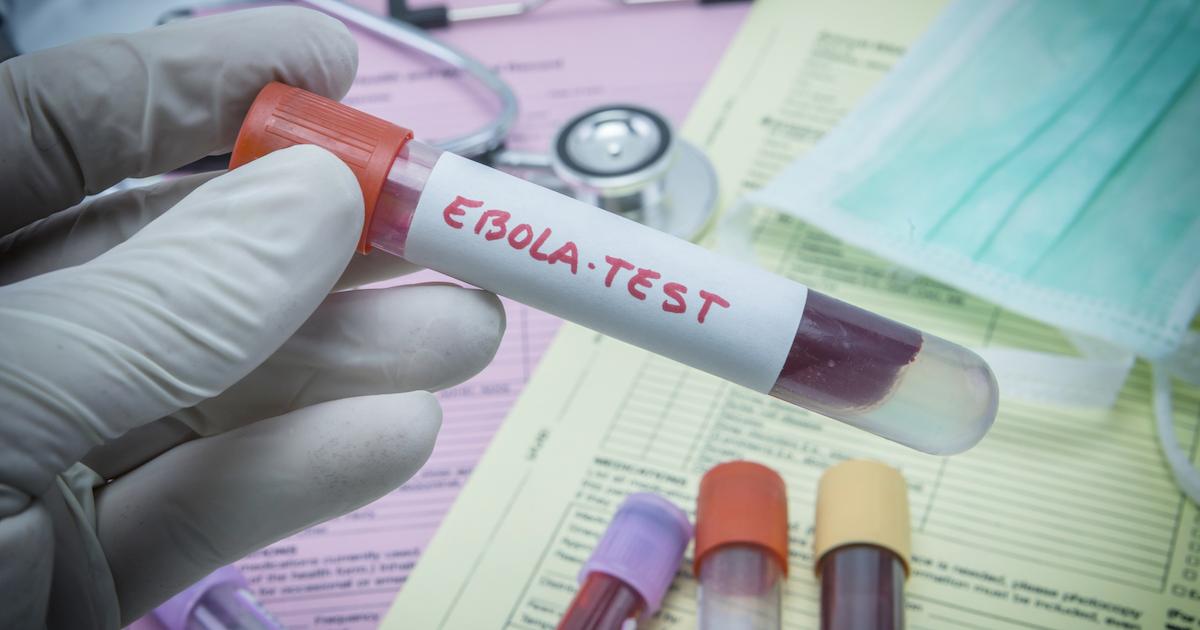What Causes Coffee Ground Vomitus?
Coffee ground vomitus is vomit that appears to have black or brown grounds in it due to the presence of old blood in the gastrointestinal tract. There are several conditions that can cause bleeding of the esophagus, stomach, and upper parts of the small intestine. Typically, vomiting blood is a serious medical problem that requires emergency medical attention. It can be difficult to identify a cause for coffee ground vomitus because there are numerous conditions it could be an indication of. Treatment can only be recommended once the underlying cause of the coffee ground vomitus is diagnosed. The recovery time of an individual who is experiencing coffee ground vomitus is determined by the severity of the condition causing it. Get to know some of the major causes of coffee ground vomitus now.
Gastritis

Gastritis is the official medical term used to describe stomach lining inflammation or damage that shows up on a biopsy taken during an upper endoscopic procedure. The stomach lining is inflamed or damaged as a result of digestive juices permeating through an injury or weakness in the protective mucus barrier lining of the stomach walls. There are a number of causes for this to happen. The bacteria that causes most stomach ulcers are also commonly responsible for causing it. Taking pain relievers such as ibuprofen or naproxen can result in the depletion of an important substance that assists with the preservation of the stomach lining. This inflammation can also occur when the stomach lining is eroded as a result of excessive alcohol use. In moderate cases of this condition, coffee ground vomitus is a common occurrence due to the thinning of the stomachs lining and its susceptibility to friction and irritations from certain foods or acidic beverages. In addition, the muscle contractions and the influx of acid that enters back into the stomach from the duodenum when vomiting will also result in coffee ground vomitus.
Keep reading to reveal more causes of coffee ground vomitus now.
Ebola Virus Infection

Ebola infections are caused by any one of the four strains of the virus that can make individuals become ill. The virus invades and destroys the immune system which results in excessive bleeding internally. Ebola virus infections will kill ninety percent of individuals that become infected with it. This virus affects the liver, where blood clotting proteins are synthesized. These proteins go into a hyperactive state where they form clots around the body until there are no clotting proteins left, and the liver cannot make any more. Additionally, dysfunction of the platelets the immune system is responsible for maintaining and utilizing are also a cause for the excessive bleeding throughout the body. Without properly functioning platelets and no clotting proteins, the blood is unable to clot. The widespread inflammation the virus induces will erode at the lining of the blood vessels, causing them to leak, and bleed excessively since the body has no way to clot it. The lining of the stomach and the intestines will leak and bleed, and coffee ground vomitus will be the result.
Learn more about what can cause coffee ground vomitus now.
Gastric Ulcers

When the thick mucus based protective layer of the stomach lining is reduced, the stomach lining tissues are eroded away by the digestive acids. This causes a painful open sore in the stomach called a gastric ulcer. This typically happens as a result of a Helicobacter pylori infection, or regular long term use of aspirin, naproxen, or ibuprofen. Additionally, a very rare disorder called Zollinger Ellison syndrome can result in gastric ulcers and ulcers of the small intestine. A gastric ulcer is similar to a large raw ulcer on the skin and will bleed when irritated by more acid or friction from certain types of food. Because gastric ulcers bleed into the digestive tract, unless there are symptoms of blood in the stool or coffee ground vomitus, an individual who has one may not know how much they are bleeding from it. When an ulcer bleeds into the digestive tract, old dried up blood will accumulate in the stomach, small intestine, and colon. When an individual has a gastric ulcer and experiences coffee ground vomitus, it is a result of old blood being loosened and coming up with vomit.
Read more about what conditions can cause coffee ground vomitus now.
Fatty Liver Disease

When the largest organ inside the body, the liver, has an excessive build-up of fat, it is classified as fatty liver disease. There are two types of fatty liver disease: alcoholic and nonalcoholic fatty liver disease. Alcoholic fatty liver disease is a result of excessive alcohol consumption and occurs due to the byproducts produced when the liver breaks down alcohol. Nonalcoholic fatty liver disease has nothing to do with alcohol, but rather, is a result of insulin resistance, high blood pressure, a large quantity of belly fat, and high bad cholesterol levels. The damage the liver incurs as a result of the fatty liver commonly results in the liver attempting to repair itself. This response causes scarring of the liver that impairs its ability to function properly. This can cause the synthesis of clotting proteins to cease, and portal hypertension will avert blood to smaller vessels that tend to burst under the extra pressure. Portal hypertension happens in the esophagus and the stomach, which is what causes bleeding within the digestive tract. The blood hardens and sticks to the walls and lining of the stomach and small intestine over time. When an individual vomits, the contraction of muscles can loosen up the old blood, which will then give the vomit an appearance of coffee grounds.
Get more details on the causes of coffee ground vomitus now.
Autoimmune Conditions

There are a handful of autoimmune conditions that can cause bouts of ground coffee vomitus. An autoimmune disorder is a disorder where the immune system malfunctions and attacks the body's own healthy cells as if they were foreign invaders. Autoimmune hepatitis is the variation where the immune system attacks healthy cells of the liver, causing high blood pressure in the portal vein, which adverts blood to other vessels in the stomach and esophageal regions. The vessels burst and cause blood to come up in vomit. Another autoimmune disorder that causes coffee ground vomitus is autoimmune atrophic gastritis, where the immune system attacks healthy specialized cells in the stomach. This causes ulcers to form and bleeding in the stomach from compromised lining, and blood to come up in the vomit in the form of coffee ground vomitus.
Get familiar with more causes of coffee ground vomitus now.
Cirrhosis

An individual who experiences a type of vomiting with a coffee ground-like appearance may be affected by cirrhosis. Cirrhosis is advanced stage scarring of the liver tissues that can be the result of numerous liver conditions and diseases. When a liver condition causes damage to the cells that make up the organ, these tissues attempt to repair themselves. The repair is made with tissues that are denser and more fibrous than the original tissues, which is what causes scarring. A liver that is scarred to an advanced stage may cause the development of dilated blood vessels in the duodenum or another part of the digestive tract called varices. Varices form because large amounts of blood are unable to move through the main vessels in the liver that has become stiff from advanced fibrosis. This mechanism causes the blood vessels in the liver and close to the liver to bulge and become weak. Weakened blood vessels can leak blood or rupture into the duodenum, which coagulates and takes on a coffee-ground appearance that can be seen upon vomiting.
Get more information on what causes coffee ground vomitus now.
Hemophilia B

Hemophilia B is a blood disorder that occurs because mutations in the F9 gene cause the absence or altered production of certain blood proteins that should clot the blood. Hemophilia B patients experience longer than normal bleeding after an injury, surgery, or any other blood vessel damage. The blood of an individual who has hemophilia B will eventually coagulate and clot, but takes longer than someone not affected by this disorder. Hemophilia B patients do not bleed any faster than individuals who are not affected but may bleed more frequently. Individuals with hemophilia B who develop duodenal ulcers, gastritis, or another form of gastrointestinal ulcer can experience bleeding from their condition in the digestive tract. This bleeding can manifest as coffee ground vomitus because the extended duration of bleeding in the gastrointestinal membranes allows some of the blood to coagulate. This coagulated blood may be expelled in vomit.
Continue for more on what can trigger coffee ground vomitus now.
Certain Types Of Cancer

When an individual vomits blood, the color and consistency of the blood can tell their doctor how long the blood has been present in their body outside of circulation. Cancerous tumors that grow in the digestive tract can damage the small blood vessels that provide blood and nutrients to the mucosal linings of these organs and structures. A tumor that grows in the esophagus and causes damage to blood vessels can produce a maroon-colored vomit with some coffee ground consistency if some of the blood has drained into the stomach and coagulated before expulsion. Cancer that grows in the stomach, pancreas, small intestine, or duodenum can cause damage to the blood vessels that feed these tissues. This blood vessel damage causes the leakage of blood into the lower stomach and duodenum. When this blood comes up via forceful vomiting, it may have a coffee-ground appearance because it has been in the stomach or duodenum for a longer period than blood from damaged esophageal vessels.
Get more details on the various causes of coffee ground vomitus now.
Esophageal Varices

Esophageal varices is a term used to describe abnormal vessels that are enlarged and located in the esophagus. This symptom most often develops when the blood flow to and around the liver is obstructed as a result of disorders that cause excessive blood clotting, certain parasitic infections, or liver cirrhosis. An affected individual's blood makes a detour or flows through an alternate route by using the smaller blood vessels not made to accommodate large volumes of blood. These blood vessels dilate, swell, bulge, leak, and can rupture, causing a bleed in the digestive tract. Blood that leaks or comes from ruptured blood vessels in the esophagus may drain into the stomach contents. If the patient experiences problems with their digestive processes or other problems that cause them to vomit, this partially coagulated blood that has been in their stomach from their esophagus can present as coffee ground vomitus.
Read more about the causes of coffee ground vomitus now.
Yellow Fever

Yellow fever is a potentially deadly and serious flu-like illness transmitted to humans by infected mosquitos. Yellow fever is caused by the Flavivirus and can only be transmitted from mosquito to human and not human to human. The incubation period of this virus is between three and six days after the first exposure. Mild symptoms develop and last for between twenty-four and forty-eight hours before they subside. Some individuals develop symptoms on a more severe scale again after another twenty-four hours have elapsed. This toxic phase of yellow fever is referred to as viral hemorrhagic fever and occurs when the virus attacks and damages the blood vessels in multiple organ systems in an individual's body. This mechanism results in massive internal bleeding, liver damage, high fever, kidney damage, and multi-system organ failure. Internal bleeding that affects the digestive tract can cause patients to have an upset stomach and vomit blood that may be partially coagulated, which may take on a coffee ground appearance.